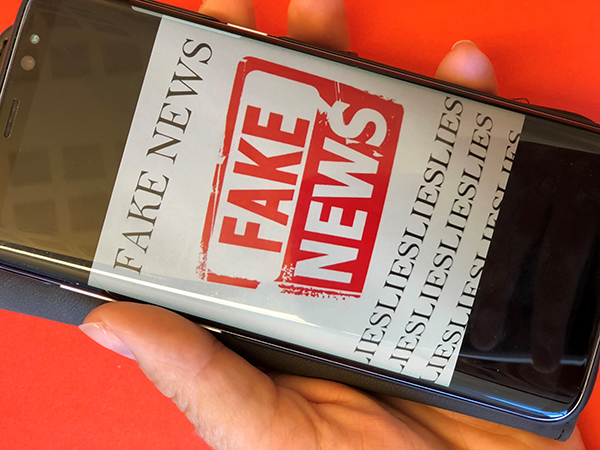
|
“Fake news” became a common concept in connection with the notorious presidential election campaign in the United States in 2016. Most people are aware of the existence of unreliable news sources, or that messages in social media are spinned in one direction or another, that opinions are expressed as facts, and that fake news are sometimes even spread via established media houses. Even though most people are aware of this, some messages, disinformation items or completely fabricated stories manage to get through the noise for the purpose of misleading or influencing us.
But why do we allow ourselves to be deceived? Mia-Marie Hammarlin, associate professor of ethnology and senior lecturer in journalism, media and communication studies at Lund University, responds.
“Social media is the most effective tool for sharing strong emotions: anger, frustration, fear, etc. Our feeds on Twitter or Facebook, for example, are often dominated by emotions. Furthermore, people are narrating creatures. For example, reading a long terrible story about a child who developed autism after a vaccination engages our interest and emotions. In this state, we may find it hard to take in facts, e.g. that we all risk re-introducing extinct, dangerous diseases if the majority of the population do not vaccinate their children, and that the risks of vaccines are small in comparison.”
Can you give an authentic example of a case of fake news that had a major impact through usually reliable channels?
“In my book ‘I stormens öga’ [In the Eye of the Storm] I analyse a case that had a huge impact in Swedish media a few years ago, the case of the ‘floorball dad’. It involved a mean dad who had his son walk home alone from a floorball tournament many miles away from home in the middle of winter because ‘his playing sucked’. Essentially all media outlets reported on the case, including public service television and radio. Later it turned out that the whole story was a fake, Swedish
Television and Radio Sweden were found guilty by the Swedish Broadcasting Commission for their segments. I call this a news myth – a hybrid between news as a genre and urban myths as a genre. Recently, there have been fake news about migrants; for example, I’m thinking of a strange rumour that spread about women allegedly exploiting undocumented migrant boys, sexually or at least intimately. Abroad, rumours have spread that the Swedish Government’s proposal for a sexual consent law is the result of migrants committing so many rapes, which is in no way true.”
What is the greatest danger of fake news?
“That people believe in them and then spread them. Different types of decisions need to be based on proven knowledge, not on our emotions.”
How can society combat fake news?
“Media literacy should be included in the Swedish curriculum from an early age. However, I notice that my children, 8 and 9, today are in contact with concepts such as ‘source criticism’. I wasn’t when I was at that age.”
|
|